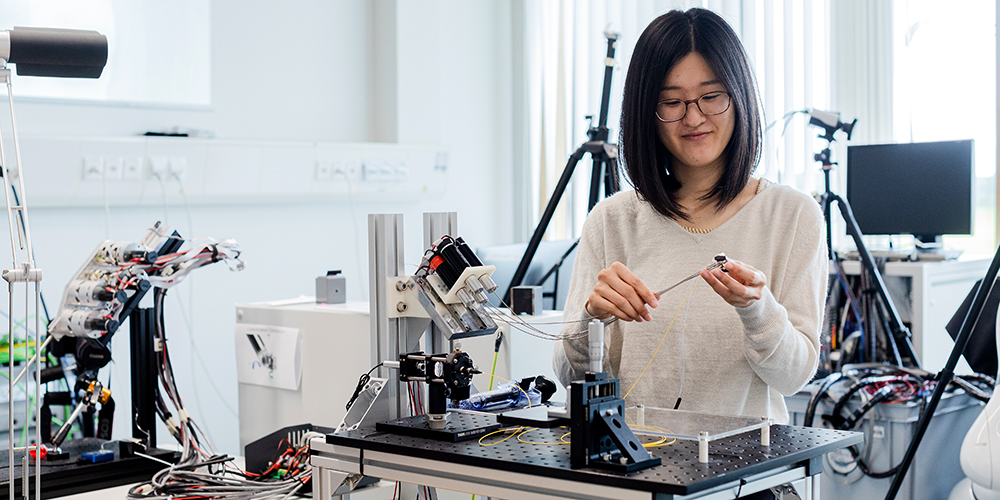Tokyo (SCCIJ) – A Japanese doctoral student, Yukiko Tomooka, aims to transform minimally invasive laser surgery with her research at the University of Basel. Tomooka is developing an attachment mechanism for a mini-robot that assists surgeons by stabilizing the laser.

In search of stability: Yukiko Tomooka researches a miniature robot for minimally invasive laser surgery (Photo: University of Basel/Eleni Kougionis).
Minimal invasive
Yukiko Tomooka’s delicate hands turn the robot carefully about its axis. A laser fiber is connected to the fingertip-sized device. Tomooka uses her fingers to trace movements in the air that the device would perform if used during an operation, and pulls apart a 3D model of a knee to show where the robot would be positioned.
The robot is the centerpiece of her group, the Bio-Inspired RObots for MEDicine Laboratory (BIROMED-Lab) at the University of Basel, led by Prof. Georg Rauter. The team has been developing a miniature robot for minimally invasive laser surgeries. The first target application is knee operations such as unicondylar knee arthroplasty or cartilage repair.
“These procedures are commonly performed as invasive open surgeries. We aim to make the procedures less invasive using this miniature robot”, explains the Japanese researcher. One of the challenges of the group: The joint is complex and space in the knee for surgical instruments is limited.
Balloon as stabilizer
For her doctoral dissertation, the Japanese Ph.D. student is researching an attachment mechanism that allows for the robot to position, reposition, and stabilize the laser vis-a-vis the target tissue: “The device needs to work accurately and robustly against mechanical disturbances. I am trying to develop a mechanism to increase the stability.”
For this, she has developed balloons that can inflate and deflate themselves. This fills the space between the tissue and the robot, meaning the latter is more or less jammed in and therefore stabilized, the robot that guides the laser at the tip to cut the bones is fixed. “We are on the right track, even though there is still a lot of work ahead of us,” she said.
Move to Switzerland
Tomooka who grew up in Tsukuba completed both her bachelor’s and her master’s degrees in Hokkaido. She then worked for Canon Medical Systems for five years. However, she was tempted by the idea of a doctorate after all. With the help of Prof. Rauter, she applied and succeeded in obtaining a Swiss Government Excellence Scholarship. Additional funding for her project came from the National Competence Center on Research on Robotics.
At the University of Basel, she works closely together with the specialists from the Faculty of Medicine who are ultimately going to operate the robots. They give Tomooka important feedback to optimize the prototypes. Even the language difficulty could not stop her move to Switzerland: “My studies up to bachelor had only been in Japanese. So, the first thing I had to do was to learn the English technical terms.” She wants to finish her dissertation in 2025.
Text: Catherine Weyer/University of Basel (Editing by SCCIJ)





























